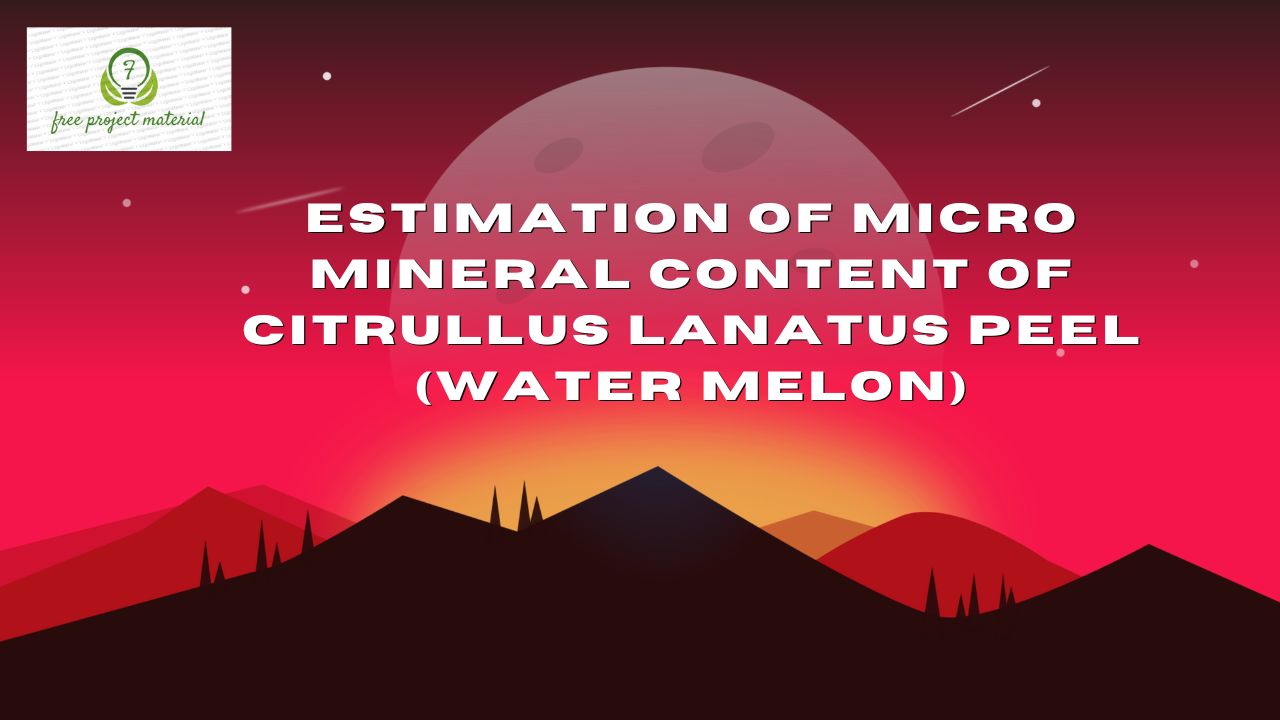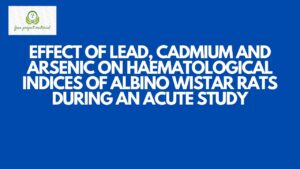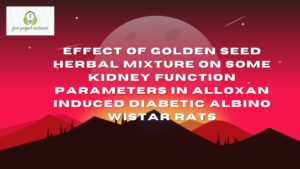ABSTRACT
Estimation of macro mineral content of Citrullus lanatus peel was determine using standard analytical procedure. The concentration of the macro mineral were Phosphorus (P) (15.110 0.0012 mg/100g), Potassium (K) (36.770 0.043 mg/100g), Calcium (Ca) (55.213 0.451 mg/100g) and Sodium (Na) (70.860 0.511 mg/100g). From the result obtained from the study it shows that Citrullus lanatus peel is a rich source of essential macro minerals. Therefore the peels should be consumed regularly to meet the requirement of macro minerals of the body.
TABLE OF CONTENTS
Title Page
Certification
Dedication
Acknowledgements
Abstract
Table of Contents
CHAPTER ONE: INTRODUCTION
1.1 Background of the Study
1.2 Aim and Objective of the Study
1.2.1 Aim
1.2.2 Objectives
1.3 Scope and Limitation of the Study
CHAPTER TWO: LITERATURE REVIEW
2.1 Description of Citrullus lanatus
2.2 Botanical Classification of Citrullus lanatus
2.3 Nutritive Value of Citrullus lanatus
2.4 Bioactivity of Citrullus lanatus
2.4.1 Anti-Inflammatory Activity
2.4.2 Anti-Ulcer Activity
2.4.3 Anti-Microbial Activity
2.4.4 Hepato Protective Activity
2.5 Macro Mineral Element
2.5.1 Phosphurus (P)
2.5.2 Potassium (K)
2.5.3 Calcium (Ca)
2.5.4 Sodium (Na)
2.6 Importance of Macro Mineral
CHAPTER THREE: MATERIALS AND METHODS
3.1 Materials
3.2 Methods
3.2.1 Sample Collection
3.2.2 Sample Preparation
3.3 Macro Mineral Analysis
CHAPTER FOUR: RESULTS AND DISCUSSION
4.1 Results
4.2 Discussion
CHAPTER FIVE: CONCLUSION AND RECOMMENDATION
5.1 Conclusion
5.2 Recommendation
References
CHAPTER ONE: INTRODUCTION
1.1 Background of the Study
Watermelon (Family Cucurbitaceae and species Citrullus lanatus) is a major fruit widely distributed in the tropics (Yamaguchi, 2006). The fruit pulp serves as a thirst-quencher owing to it height (92%) water content (Ensminger and Ensminger, 1986). It is an excellent source of minerals (Hall, 2004). Vitamin C and A (Edwards et al., 2003). Pulps of various fruits including watermelon (Citrullus lanatus) are consumed daily in Nigeria without in most cases, consuming the rind/peel and seeds. This contribute to increasing solid food wastes with potential adverse environmental and public health implications.
Citrullus lanatus (watermelon) produces a fruit that is about 93% water hence the name “Water” melon. The “melon” part came from the fact that the fruit is large and round and has a sweet, pulpy flesh. The scientific name of the watermelon is derived from both Greek and Latin root. The Citrullus part comes from a Greek word “Citrus” which is reference to the fruit. The Lanatus part is latin and has the meaning of being wooling referring to the small hairs on the stems and leaves of the plant.
Watermelon can be used as fresh salad, dessert, snack and for decorations. Drinks can also be made from the juice. The sugar content and sweetness are critical factors in determining the quality of many watermelon varieties. It is known to below in calories but highly nutritious and thirst-quencher during hot summer weather it has source of carotenoid and lycopene, lycopene has be found to be protective against a growing list of cancer (Cho et al., 2004), and is detectable, thirst quench which help quench the inflammable that contributes to conditions like diabetics, atherosclerosis, arthritis, asthma and colour cancer (Jian et al., 2007) cucurbit seeds are source of food particularly protein and oil (Hassan et al., 2008). Watermelon is also expectedly high in citrulline, an amino acid the body make use of to make another amino acid, arginine (used in the urea cycle to remove ammoniacal from the body) (Collins et al., 2007), and contained many smooth compressed seeds that thickened at the margin and black or yellow-white colour (Sodeke, 2005 & Achu et al., 2005), reported high lipid level seed from different region.
The therapeutic effect of watermelon has been reported and has been ascribed to antioxidant compounds (Leongand and Shui, 2002; Lewinsohn et al., 2005).
Meaningful solid food waste related environmental and public Health hazard management entails preventing (or at least minimizing) this could be achieved by efficient waste disposal and management or by increasing the dietary and industrial utilization of the waste are required to provide scientific basis for their possible potential use, including in diets and drugs. For instance seed and peels of grapes and pome granates have rich natural antioxidant (Jayaprakasha et al., 2001) that could reduce oxidative stress in animal studies on watermelon fruit were reported. But mainly on the juice/pulp (Johnson et al., 2012; Oseri and Okoye, 2013) and a little on the peel/rind for industrial application, nutrient value, antinutrient, antibacterial and antifungal properties (Fila et al., 2013; Gin et al., 2014; Egbuonu, 2015) the food value and pharms food potentials of a food source could be further assessed through the mineral, amino acid and vitamin composition of the food source, warranting the present study of the rind and seed flours of Charleston gray variety of watermelon (Citrullus lanatus var Charleston gray) a common variety of water melon in Nigeria.
The studies on watermelon (Citrullus lanatus) have focused on the anti-nutritional (Johnson et al., 2012) phyto-chemical and anti-oxidant properties (Oseni et al., 2013) also to increase shelf-life (Hanan et al., 2013) and the fruit juice having the nutritional/quality (proximate) content (Fila et al., 2013). The rind (peels) which could encourage their consumption or further use. The aim of this research work is to determine some functional properties of the peel (rind) dried powder extract with a view of harnessing it for consumption and possible industrial usuage.
1.2 Aim and Objective of the Study
1.2.1 Aim of the Study
The aim of this research work is to Estimate the macromineral content of Citrullus lanatus.
1.2.2 Objective of the Study
The main objective of these study is to estimates;
- The Phosphorus content of Citrullus lanatus peels
- The Calcium content of Citrullus lanatus peels
- The Potassium content of Citrullus lanatus peels
- The Sodium content of Citrullus lanatus peels
1.3 Scope and Limitation of the Study
The scope of the study is limited only to the estimation of macro-mineral content of Citrullus lanatus (water melon) due to financial/time constraint and lack of adequate facilities, this research is limited to the following parameters; Phosphorus, Potassium, Calcium and Sodium.


